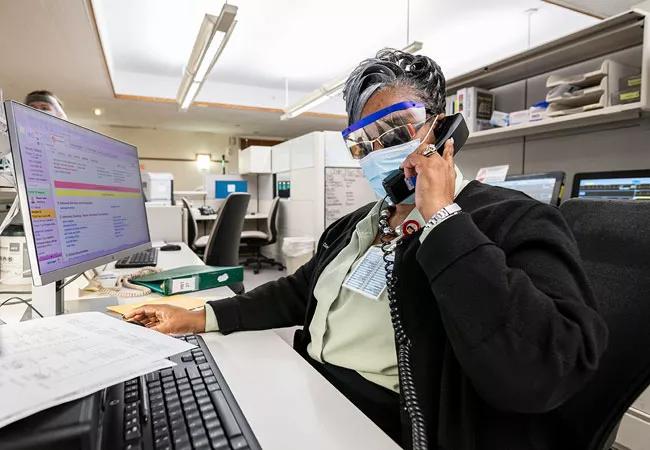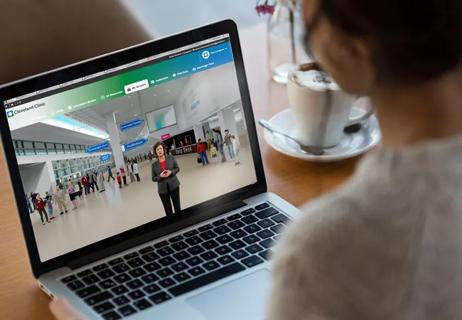Employee support, well-being, mental health, remote work

By K. Kelly Hancock, DNP, RN, NE-BC, FAAN, Chief Caregiver Officer, Cleveland Clinic Health System
Advertisement
Cleveland Clinic is a non-profit academic medical center. Advertising on our site helps support our mission. We do not endorse non-Cleveland Clinic products or services. Policy
It has been a year unlike any other for HR leaders in healthcare. Leading organizational HR functions in 2021 required us to relinquish our hold on traditional ways of doing things and be flexible as we shifted priorities. We learned, grew and adapted from our experiences in 2020, and we will likely be called upon to do the same in the coming year.
As HR leaders plan for 2022, we are using what we’ve garnered to map our next steps.
Employees are an organization’s greatest asset. Supporting workers and their families during a time of crisis is the right thing to do, and it also shows them that their employer cares about them.
At Cleveland Clinic, more than 2,300 caregivers enrolled in our COVID Family Support Program in 2021, affirming that employees and their families want and need help. We delivered 78,000 meals, as well as household basics and prescriptions, to caregivers and families who contracted COVID-19. We partnered with small and local businesses to provide 44,000 grab-and-go take-home meals for frontline employees and their families. And our free-of-charge childcare and eldercare services had 717 participants. In addition, our employee hardship fund helped 1,534 caregivers in 2021 with $1.6 million in financial assistance.
These numbers speak: Continuing to support employees and their families through the pandemic is a vital and invaluable move for organizations.
Employee well-being rightfully took a front seat in 2021 for healthcare HR teams. They recognized the value of helping employees be at their best to care for patients and communities.
Advertisement
At Cleveland Clinic, our Caregiver Office set in motion a re-imagined well-being strategy that focuses on access, culture and operational excellence. It encompasses a unified vision that considers employee needs today and in the future. It aims to create a culture where caregivers:
Organizations that consider an evidence-based, multidimensional and holistic approach to well-being will be better poised for future success. This means that in addition to programs addressing traditional elements of disease prevention and physical health, organizations should consider each person as a whole and aim to provide environments that have a positive impact on workers’ bodies, emotions, minds and spirits.
Good mental health is vital to a person’s ability to thrive professionally and personally. It has always been an important part of employee well-being, but it has become more so during the pandemic. Supporting workers’ mental health is one of the most meaningful ways to convey care for employees and organizations benefit by investing attention in helping their team members attain needed resources.
Some of the mental health resources Cleveland Clinic refined, developed and offered caregivers in 2021, include:
• 24-hour support hotline
• On-demand virtual mental well-being sessions
• Employee and professional staff assistance programs
• Clarity eCoaching and emotional well-being offerings
Advertisement
Leaders in HR and all areas of an organization should encourage employees to acknowledge mental and emotional health needs and to use the resources available to them. Leaders also need to remember to focus on their own mental health and prioritize self-care, talk about their self-care techniques and experiences with others, and serve as mental health role models.
In 2021, healthcare organizations set aside traditional thinking about work environments and embraced remote and hybrid work models, transforming where and how those in healthcare work.
Cleveland Clinic launched its new long-term remote work strategy in June. Since there is no one-size-fits-all model for long-term remote work, our strategy included a combination of remote, hybrid and onsite models. Considerations that can be helpful for this kind of planning:
• Identify specific criteria and eligibility to guide decisions on permanent work arrangements for leaders and employees.
• Promote experience and flexibility and create safe, collaborative spaces.
• Maintain business continuity and optimize efficiencies from space and infrastructure consolidation.
Looking ahead, change management will be key for those who are leading the transition to remote work. To create the best employee experience, regardless of work location, leaders should aim to evolve and adapt, listen to employee needs and monitor flexible workforce practices.
We all have high hopes for 2022. By applying all that we learned this year to the work ahead, HR leaders are sure to enter the new year on a solid foundation.
Advertisement
Advertisement

Recruiters emphasize empathy and personal connections when building healthcare talent pool

New engagement strategy for leaders and teams

Informative and inspiring from the first day

Peer collaboration, flexibility amplify learning

Curriculum helps participants match personal strengths to career goals

Volunteer program invites caregivers to serve as patient navigators

Program thanks those whose actions personify Cleveland Clinic values

Donated funds help ease unexpected burdens